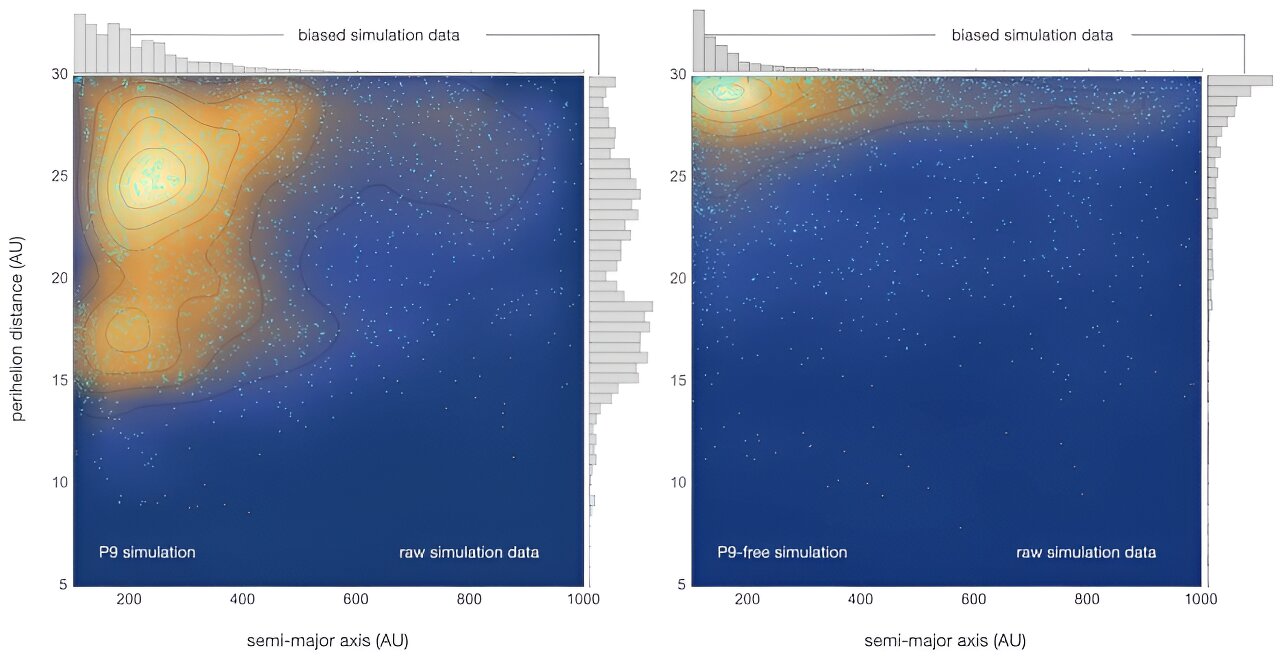A small team of planetary scientists from the California Institute of Technology, Université Côte d’Azur and Southwest Research Institute reports possible new evidence of Planet 9. They have published their paper on the arXiv preprint server, and it has been accepted for publication in The Astrophysical Journal Letters.
In 2015, a pair of astronomers at Caltech found several objects bunched together beyond Neptune’s orbit, near the edge of the solar system. The bunching, they theorized, was due to the pull of gravity from an unknown planet—one that later came to be called Planet 9.
Since that time, researchers have found more evidence of the planet, all of it circumstantial. In this new paper, the research team reports what they describe as additional evidence supporting the existence of the planet.
The work involved tracking the movements of long-period objects that cross Neptune’s orbit and exhibit irregular movements during their journey. They used these observations to create multiple computer simulations, each depicting different scenarios.
In addition to factoring in the impact of Neptune’s gravitational pull, the team also added data to take into account what has come to be known as the galactic tide, a combination of forces exerted by Milky Way objects beyond the solar system.
The research team found that the most plausible explanation for the behavior of the objects was interference from gravity exerted by a large distant planet. Unfortunately, the simulations were not of the type that would allow the research team to identify the location of the planet.
The team acknowledges that other forces could be at play that might explain the behavior that they simulated but suggest they are less likely. They also note that further evidence will become available as the Vera Rubin Observatory in Chile is set to begin operations sometime next year. It will be equipped, they note, to search in new ways for the planet in a rigorous assessment of its existence.
More information:
Konstantin Batygin et al, Generation of Low-Inclination, Neptune-Crossing TNOs by Planet Nine, arXiv (2024). DOI: 10.48550/arxiv.2404.11594
© 2024 Science X Network
Citation:
New evidence found for Planet 9 (2024, April 23)
retrieved 23 April 2024
from https://phys.org/news/2024-04-evidence-planet.html
This document is subject to copyright. Apart from any fair dealing for the purpose of private study or research, no
part may be reproduced without the written permission. The content is provided for information purposes only.


